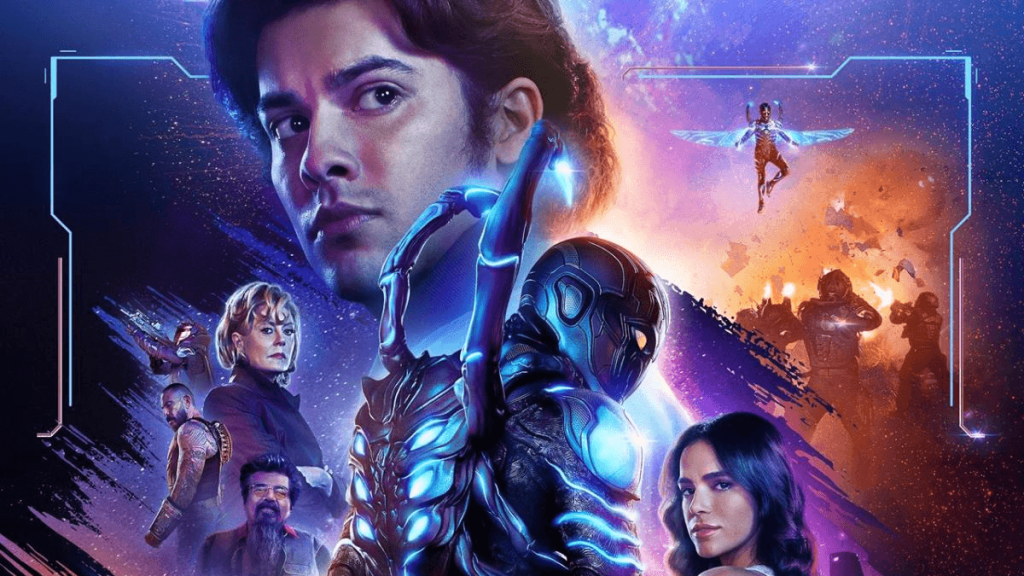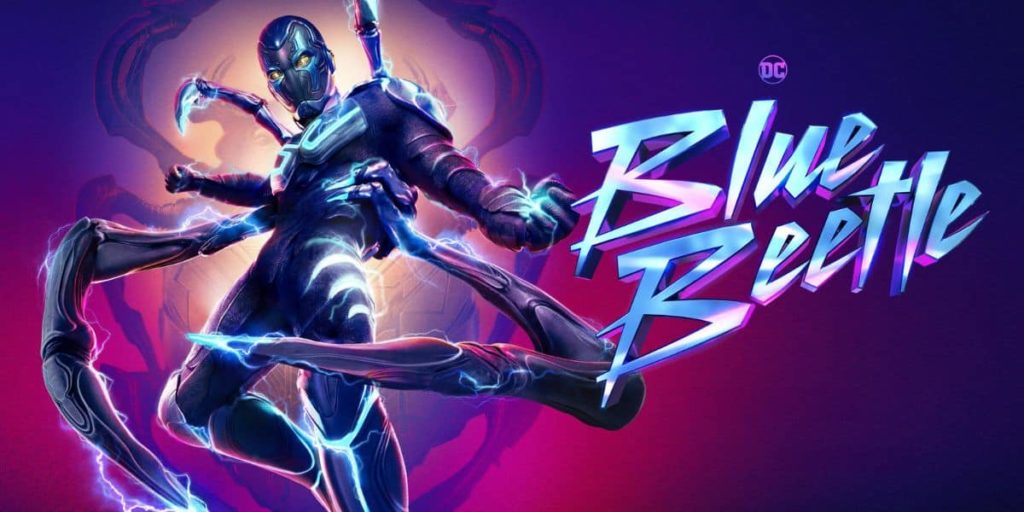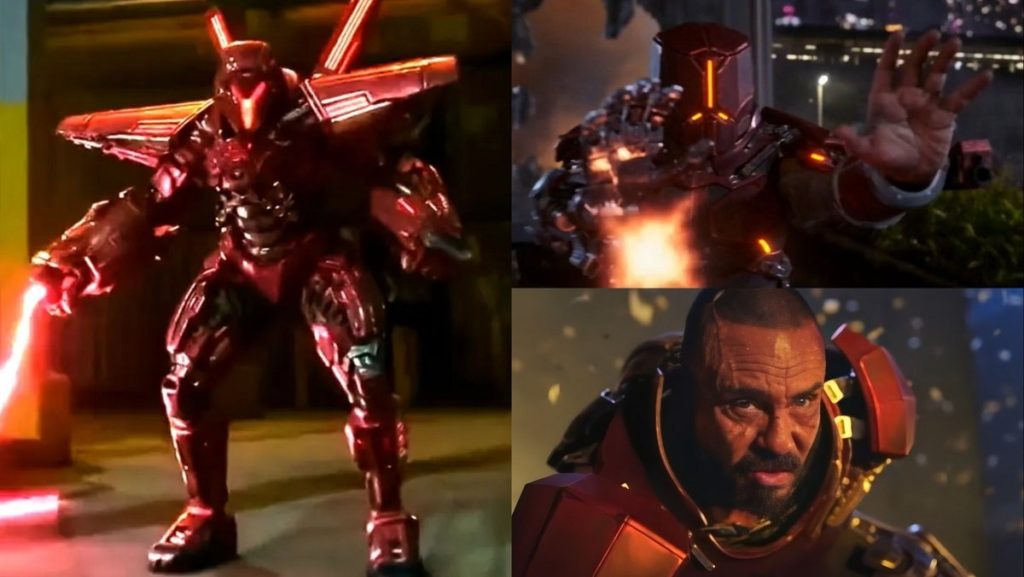"Pretty Guardian Sailor Moon Eternal, Part 1"
Sailor Moon Crystal wisely makes the decision to adapt Season 4's Dream Arc into an epic anime movie where the Sailor Guardians shine brightest.


Editor’s note: this article contains spoilers for Blue Beetle
Blue Beetle (2023) is a compelling film centered around a Mexican-American family triumphing over the odds while never losing sight of what it means to be a family. There is a secondary theme of social justice, where a Latino college grad finds a greater destiny in a postgrad world that misled him about his economic prospects. Somewhere in there is also some fighting between two men in superpowered battle suits. But truthfully, the film’s heart is the emphasis on the Blue Beetle’s true superpower – his family and relationships.
This has numerous implications. For viewers who appreciate well-developed characters and their interpersonal dynamics as the foundation of a compelling narrative, this will provide a gratifying payoff. Additionally, there will be those who find satisfaction in witnessing the symbolic triumph of a person of color (POC) college graduate succeeding despite the challenges posed by predatory capitalism. The film also incorporates modern humor and offers commentary rooted in contemporary perspectives on topics such as gentrification, the American Dream, racism, discrimination against Hispanic people, and elitism.
I thoroughly enjoyed the film. I found myself yelling at the characters who behaved annoyingly, just like real family members and friends. I longed for a hug from his abuela, rolled my eyes at his tio and hermana, and felt a pang of sadness when his papi died. The visual effects were genuinely cool, the Beetle suit was impressive in battle, and the family playing a role in rescuing the hero was a nice touch.

I once read a music review that described Michael Jackson’s 1991 album, Dangerous, as an excellent new jack swing album released after the new jack swing era had passed. The review lamented that if it had come out just one year earlier, it would have been received differently. I find a similar concept applicable to recent superhero films like Blue Beetle and The Marvels. While they are well-crafted films, they debuted in an oversaturated market. Following the conventions of the genre, they can come across as having “nothing new to offer” in a crowded landscape. This is explained for The Marvels specifically by Incluvie founder Cathy Yee.
The film is well-executed. However, beyond the impressive elements mentioned earlier, it follows the standard superhero film formula. While Blue Beetle provides an entertaining experience, the storyline is somewhat familiar. Jaime Reyes, a young individual facing real-world troubles but possessing a good heart, stumbles upon the Beetle Scarab, which unexpectedly forms a thematic bond with him. As capitalist forces attempt to reclaim the ancient and expensive technology, chaos ensues, leading to the unfortunate death of his father, Alberto, during the darkest moment of the film. The climax features a final battle between the newly bonded Blue Beetle and Carapax, the antagonist in another superpowered battle suit.
His father’s demise evokes memories of Uncle Ben’s death in Spider-Man, aligning with the common trope of parental figures perishing to imbue the hero with a tragic sense of purpose. The archetype of a deceased parent transforming into a spiritual guide guiding the hero appears ubiquitously, from Harry Potter to Percy Jackson.

The Blue Beetle suit bears resemblances to Spider-Man’s iron spider suit, Deadpool, and Iron Man. Victoria Kord’s portrayal as a callous CEO orchestrating a generic AI robot world domination plot through police brutality battle bots fits the traditional villain mold, but she is overshadowed by her henchman, Carapax.
Carapax, a generic swarthy Latino mercenary-type warrior, is presented with a supposed heart of gold, symbolized by carrying a photo of his daughter in a heart-shaped necklace locket. Despite his battle experience, the newbie Blue Beetle manages to defeat Carapax, presumably due to a complete fusion with the Scarab, embodying the chosen one trope prevalent in fantasy storytelling.

The Blue Beetle’s character is revealed through his choices, a common narrative device for most characters. Unaware that his family is alive and believing Carapax is responsible for their deaths, Jaime faces the opportunity to kill him after winning their battle. However, the suit, now fully fused within him and reflecting his true self, voices that this isn’t the person Jaime is at heart. Jaime regains his composure and chooses mercy.
In truth, did anyone truly anticipate the titular character of a superhero film intentionally killing the villain? Especially when the audience is relieved of tension by knowing his family is alive? Even Carapax’s sympathetic flashback, illustrating his trauma and manipulation by Victoria, follows the expected patterns of modern storytelling.
Carapax walking into an explosion while carrying Victoria with him adheres to the death equals redemption trope, with a touch of relieving the hero from directly causing the villain’s demise. Finally, the film concludes with the cliché ending of the downtown brown boy winning the heart of the fair-skinned uptown girl. These are genre conventions (the latter being a colorist convention) that are all expected.
While The Blue Beetle is a great film, judging it against other superhero films within the DC, Marvel, and various universes may lead to unfair judgments. However, films don’t exist in a vacuum, so perhaps such comparisons are justifiable. I leave it to the viewer to decide.
Related lists created by the same author
Sailor Moon Crystal wisely makes the decision to adapt Season 4's Dream Arc into an epic anime movie where the Sailor Guardians shine brightest.
Related diversity category
This list was made with the intention of celebrating comedic craft and a love of seeing more women of colour and newcomers on the scene.
Related movie/TV/List/Topic
Twisting what seems to be obvious setups and frameworks is what sets the story structure of Squid Game apart. I appreciate that this narrative is complex but not complicated; an easy enough plot to wrap your head around while still treating the audience like an equal participant in this social commentary